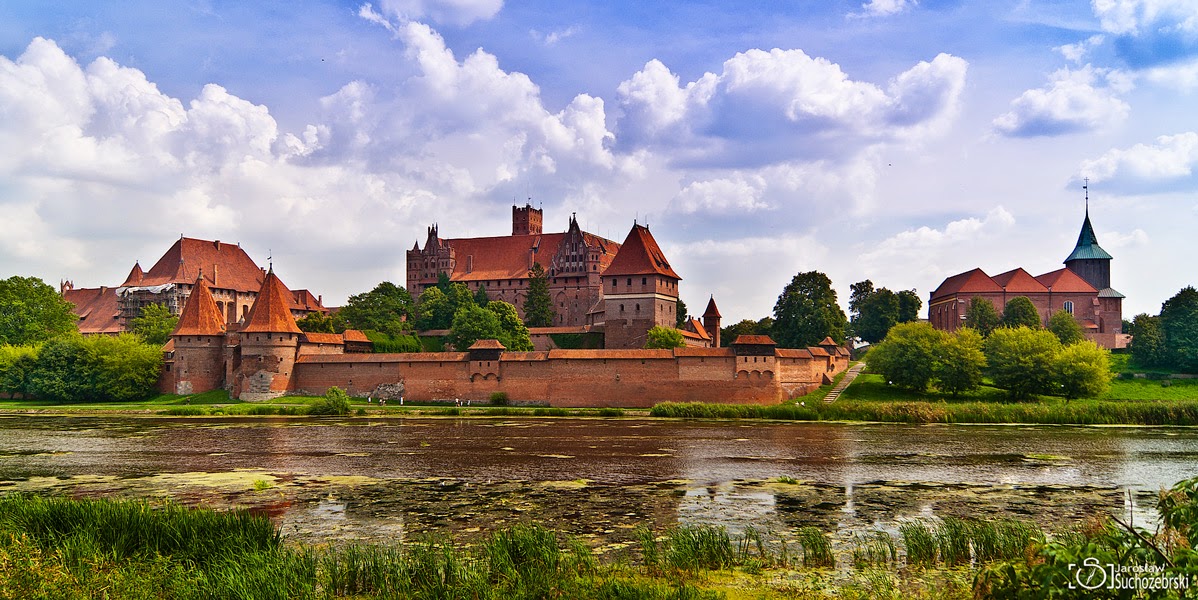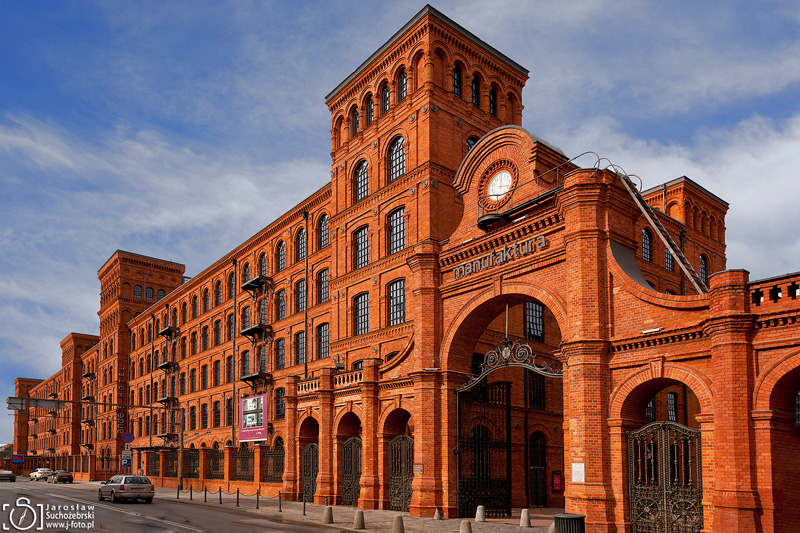 |
| Citadel of Visegrád. |
Visegrád is a small town north of Budapest, located on the right bank of the Danube. Visegrád is famous for the remains of the Early Renaissance summer palace of King Matthias Corvinus of Hungary and the medieval citadel. The name Visegrád (Vyšehrad) is of Slavic origin, meaning acropolis, literary "
the upper castle" or "
the upper settlement". The castle of Visegrád is called
Fellegvár in Hungarian, with the literal meaning "
cloud castle".
 |
| Citadel (Upper Castle), Salomon Tower (Lower Castle) and Royal Palace |
The town is famous also as the primary meeting place of the Visegrad Group - an alliance of four Central European states – Czech Republic, Hungary, Poland and Slovakia – for the purposes of furthering their European integration, as well as for advancing military, economic and energy cooperation with one another.
 |
| Lower Castle |
The name refers to the tradition of meetings of kings of Hungary, Bohemia and Poland. The famous Royal Summit took place here in 1335, when Charles Robert King of Hungary invited John of Luxembourg, King of Bohemia; Casimir III, King of Poland; Charles, the Moravian Marquis; Heinrich Wittelsbach, the Bavarian Prince and Rudolph, the Saxon Prince. They created such a significant agreement, which secured the economical independence of the affected countries from Vienna and from the Western merchants. A second meeting took place in 1339, where it was decided that after the death of Casimir III of Poland, the son of Charles I of Hungary, Louis I of Hungary, would become King of Poland provided that Casimir did not have a son.
 |
| Lower Castle |
Today, this tradition continues leaders of the Poland, Czechia, Slovakia and Hungary within the Visegrad Group. The Royal Palace historical walls hosted the signing of the cooperation in 1991. The Hungarian, Czechoslovakian and Polish Presidents followed the example of their ancestors. The group used to be occasionally referred to as the Visegrád Triangle, due to the fact that it was originally an alliance of three states – the term has not been valid since 1993 (when after the dissolution of Czechoslovakia, the Czech Republic and Slovakia became independent members of the group, thus increasing the total number of members to four), but does continue to appear sometimes.
 |
| Lower Castle |
Visegrád was always in the centre of attention during history due to its favourable amenities and strategical role. The earliest traces of a human presence lead us to the New Stone Age, and from the Bronze Age, the town and its surroundings have been populated continuously. The Romans built the Ponts Novatus fortress, which was the most significant construction of the `limes` system by the Danube. When the Hungarians were settling in this area it was built the first fortress, by using its stones, but this fortress was demolished during the Mongol invasion.
 |
| Upper Castle (Citadel) |
The current fortress complex was built in the 1250s. The Citadel had a multifunctional role: it was protecting the valley of the Danube, and also served as a custom’s house. The fortress consists of the Citadel on the top of a 328 m hill, the Lower Castle situated on the hill underneath the Fortress hill, and the Water Bastion located on the Danube embankment. King Charles Robert started the construction of the Royal Palace on the main street of the town close to the Danube Bank around 1320. Within a couple of years, this centre became the royal headquarters and the favourite residing place of the King.
 |
| View of the Danube Valley from the Upper Castle |
King Matthias created the Palace complex enriched with late Gothic details, which can be viewed in the museum. Renaissance palace was often visited by the prominent figures of the era, who were philosophising in science, philosophy and literature and they were supporting the arts and they were leading the innovations.
 |
| View of the Danube Valley from the Upper Castle |
The Upper Castle served for the safekeeping of the Hungarian royal insignia between the 14th century and 1526. This prosperous period lasted until the Turkish times when immense regression and destruction started. Visegrád lost importance after the partition of the Kingdom of Hungary following the Battle of Mohács in 1526. In 1544 Visegrád was occupied by the Ottoman Empire, and, apart from a short period in 1595-1605, it remained in Turkish hands until 1685. The castle was seriously damaged by the Turks and was never used afterwards. The remnants of the fortress were exploded under the command of Leopold I, Austrian Emperor in 1702.
 |
| Upper Castle |
The development of the settlement started once more in the 19th century when the Danube steam boating began and the Danube Bend and Pilis - Visegrád Mountains became favourite excursion targets of the hikers arriving from the capital.
 |
| Upper Castle |
Today Visegrád is the popular target of national and international tourism, which is located in one of the most visited recreation areas, in the Danube Bend. Though the size of the population is less than 1700 people and this is the smallest town in Hungary, the area hosts 300.000 visitors a year.
 |
| Upper Castle |
Most of the tourists are paying a visit to the Citadel and the Royal Palace. The most interesting part of the Lower Castle is the so-called Solomon Tower. The Tower was named after a false story, stating that Solomon was guarded in this Tower after losing in the battle for the throne against King Saint Laszlo and Geza. Today the Tower is hosting a five-storey museum, introducing the history of Visegrád to its visitors. There’s also a small pictorial exhibit in the residential rooms on the west side of the citadel. Upper Castle offers the beautiful and panoramic view of Danube Valley and green hills around and the quiet villages down.
 |
| Citadel and the Royal Palace |
This post is linked at:






















Wonderful post, love all the in-depth info you share!
ReplyDeleteBeautiful photographs and a fascinating history lesson. Thank you for sharing that information.
ReplyDeleteGreat tour of this very imposing, historical site!
ReplyDeleteThank you for taking part in the Travel Tuesday meme.
I love the photo of the gate. It almost reminds me of a guillotine. What a beautiful and historic site.
ReplyDeletevery great images
ReplyDeleteYes---- a wonderful post, and we are all lucky that it survives.
ReplyDeleteAmazing place. Awesome pics.
ReplyDeleteIt amazes me that this castle was in use so long ago. Fascinating!
ReplyDeleteHere's my Wordless Wednesday!
Lovely photos. Thanks for sharing the fascinating history, as well. Sounds like a lovely place to visit; perhaps someday my son and I will do that.
ReplyDeletewow it's very impressive, amazing it's lasted so long.
ReplyDeleteYou take great photos. I love them..
ReplyDeleteA marvellous castle. My favourite is the arch with the lift up gate.
ReplyDeleteMiejsce niezwykłe, tchnące historią, malowniczo położone i pięknie pokazane, pozdrawiamy i życzymy kolejnego wspaniałego roku obfitującego w podróże i inspiracje fotograficzne :)
ReplyDeleteWow, this is what a castle should look like. It is really in a commanding position. What views!!
ReplyDeleteHello, great collection of photos. The castle is awesome! Enjoy your weekend! I wish you all the best in 2017, Happy New Year!
ReplyDeleteGreat shots of a beautiful place.
ReplyDeleteSydney – City and Suburbs
I was wondering if the Danube river cruise stops here. Awesome post. Love the photos.
ReplyDeleteHappy New Year,
Worth a Thousand Words
Wow, some wonderful photography here. Very nice work. I just happened to find your blog thanks to your kind comment on mine. I will be back to see more of this impressive blog. Happy New Year!
ReplyDeleteGorgeous as always! thank you for your lovely images each week!
ReplyDeleteGreat photos and such an interesting read. Looks like a great place to visit. #PhotoFriday
ReplyDeleteThe photos are beautiful, and compelling! Great read too!
ReplyDeleteWhat a beautiful town, thank you so much for sharing, I so love to see other places I may not ever visit...thank you for your post..
ReplyDeleteWhat a beautiful sky and the water is so blue. This is such a stunning castle along with the photography.
ReplyDeletenice post and images.
ReplyDeleteImpressive castle and lovely shots of it.
ReplyDeletejanet
Enjoyed your post! What an amazing castle! Happy New Year!
ReplyDeleteI love castles and would visit any I could. The architecture is so fantastic and strong. This one is built to last! Thanks for sharing.
ReplyDeleteLooks beautiful. I have been to Budapest but need to explore more of the rest of the country. Thanks for sharing on #TheWeeklyPostcard
ReplyDeleteWow - gorgeous shots!
ReplyDeleteAh, thanks for such a detailed post. I visited Hungary a few years ago and absolutely loved it... I took day trips from Budapest to Esztergom and Szentendre, which are not far from Visegrád, but sadly did not have enough time to also visit the impressive castle. I hope to see it on a future trip - but at least, for now, I could visit it via your blog post. Thank you! :-)
ReplyDeleteWhat a great place to explore!
ReplyDeleteVisegrad is more beautiful than I thought. My husband is Hungarian and he keeps telling me about it. I'd love to see it too. Thanks for linking up to #TheWeeklyPostcard. Have a Happy New Year!
ReplyDeleteWonderful photos and what an amazing castle too #MySundayPhoto
ReplyDeleteWhat a beautiful spot and it looks so green and lush. Happy New Year to you. #MySundayPhoto
ReplyDeleteBeautiful photos! #TheWeeklyPostcard
ReplyDeleteWhat an idyllic spot! And the castle looks amazing, would love to visit and stroll around on the cobblestone in this historical place:)
ReplyDeleteOh it is beautiful... like something out of a Fairy Tale for children. (Every little girl wants to be a princess and live in a castle ... and a cloud castle would define betel you be perfect ;))! Seriously, the real history of these beautiful buildings is fascinating and you are a great tour guide.
ReplyDeleteZnowu wspaniały opis i zdjęcia, brawo !
ReplyDeleteclear blue sky and fantastic castle..I love it :)
ReplyDelete